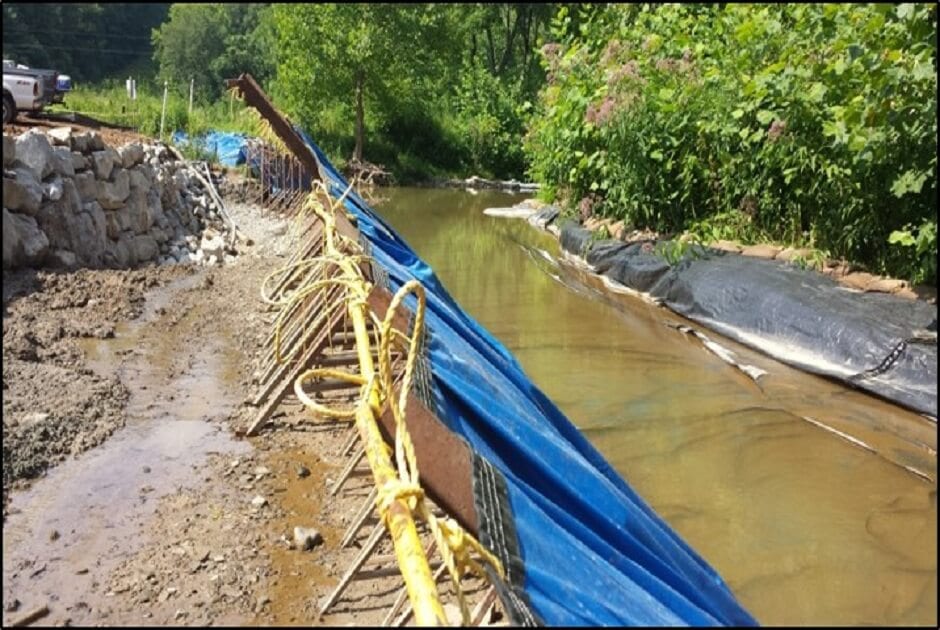When digging for a new pipeline, one of the most significant concerns is pipeline erosion. Pipeline erosion could grow to be an incredibly expensive problem if preventative action is not taken. Here are three tools to consider:
• Trench Plugs
• Dewatering
• Diversion Ditches
Below is a breakdown of the three methods along with an explanation of how they could to be beneficial in preventing pipeline erosion.
Trench Plugs
Trench plugs, also known as trench breakers, are barriers that help to slow the runoff rate, thereby helping to prevent erosion. They are most commonly used during open pipeline excavation. Trench plugs are an excellent tool to help to avoid the pipeline canal from turning into a subsurface drainage path.
During pipeline construction, the pipe runs through the trench plug. The trench plugs are typically made from materials that are slightly porous, such as concrete or stacked clay.
The state in which the pipeline is being constructed may have strict regulations about trench plugs as well. For example, the state of Pennsylvania does not allow companies to use topsoil for trench plugs. Additionally, Pennsylvania mandates impervious trench plugs for any project that involves a wetland, stream, river, or any other type of water body crossing.
Dewatering
Another tool that companies have at their disposal to prevent pipeline erosion is dewatering. When using this technique, pipeline companies will remove groundwater or surface water from the project site, reducing the risk of runoff significantly. Water can be either pumped from the site or to left to evaporate naturally.
Implementing a dewatering plan before beginning the project could cut down on delays significantly. Not only will the project remain on schedule, but dewatering will also ensure that employees are safe during the construction process. Doing so will also prevent soil erosion.
A dewatering plan takes a good bit of planning before beginning to dig. Submar recommends a survey and comprehensive research of the site before construction. Accounting for possible water that needs to be removed from the site needs to be done in advance. If there is an abundance of water pooling when digging begins, the project should come to an immediate stop until a dewatering plan has been put into place.
Diversion Ditches
Diversion ditches are used when digging to alter the flow of water deliberately. Typically, diversion ditches are constructed across slopes and along contour lines. Doing so should intercept surface runoff and divert it to these manmade ditches. Those working in upland areas should consider diversion ditches to be one of their primary methods of pipeline erosion control.
When constructing these ditches, companies should be sure not to make them too thick. Otherwise, they risk disturbing the soil and creating a more significant problem. Diversion ditches are typically a meter wide on the top and a half-meter wide on the bottom. They are about a half-meter deep.


